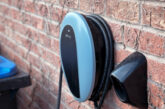
Julian Grant from Chauvin Arnoux UK discusses a few modern-day issues with EV and PV systems that are becoming more frequent, and the revenue potential they can provide for the switched-on sparky.
It would probably be fair to say that electrical contractors spend most of their days designing electrical systems, installing equipment and wiring, or fault-finding existing installations, followed by the associated testing, inspecting and certifying.
Many may have already added the installation of EV chargers to their portfolio, which although requiring training and the attainment of the appropriate qualification, is now providing them with a new and lucrative revenue stream.
Lesser-known issues
Not so well known, however, are the increasing numbers of customers that are having issues with their EV chargers unexpectedly shutting down. This often occurs during the night and is only discovered in the morning when the owner goes to use their electric vehicle.
Obviously discovering your EV has no range when you expected it to be full can be inconvenient to say the least.
Aside from the EV charger being faulty or poorly installed, one of the main reasons found for them shutting down is due to a high mains supply voltage, with every EV charger having a manufacturer-set threshold over which they will not operate.
The Electricity Safety, Quality and Continuity Regulations (ESQCR) 2002 state a permitted voltage tolerance of 230 – 6% +10%, and it is the responsibility of the Distribution Network Operator (DNO) to maintain the supply voltage to within these limits. Accordingly, many EV charger manufacturers set a maximum supply voltage threshold of 253 V, however, there are a growing number of EV owners experiencing problems, with mains voltages as high as 259 V being reported.
The same issue is starting to rear its head in the domestic PV world with grid tied inverters that should be exporting energy failing to do so and reporting high grid voltage alerts instead. Homeowners with combined PV/battery systems are then waking up to discover that batteries set to charge during the night on low-cost tariffs, simply haven’t. This is again caused by a manufacturer-set threshold designed to protect against overvoltage.
While it is the DNO’s responsibility to maintain the voltage within limits, customers with EV and PV shutdown issues are finding the best way to get them to investigate and resolve the problem is to prove to them that it exists. To do this they need to somehow measure and record the mains voltage over time with something appropriately accurate. Enter the local electrician!
The logging of electrical parameters in an installation is becoming increasingly common in the electrical contracting world for such things as maximum demand surveys, verifying electricity meter accuracy, PV/battery system sizing, and opportunities to optimise energy consumption in an installation through the identification of inefficient equipment and out of hours usage. These new EV and PV issues provide further justification for contractors considering the benefits of offering such a service.
Get logged on
Whether logging domestic installations for mains voltage compliance, or maximum current demand, or performing complete energy use surveys, the best solution is to use a single-phase portable power and energy logger like the PEL51 from Chauvin Arnoux.
The PEL51 is a powerful tool that measures and records key parameters such as voltage, current, frequency, power factor, as well as power and energy usage. It can log from a few seconds to a few months, with all measurements being recorded to a standard SD card which can be read directly with a PC. Alternatively, measurements can be retrieved via Wi-Fi or the integrated web server.
The PEL51 is complemented by Chauvin Arnoux’s PEL Transfer and Dataview PC software packages which make it easy to analyse the results and to generate pre-formatted reports.
As a professional measuring instrument, the PEL51 satisfies the need to have credible and accurate time-stamped data to provide to the customer, and with the ever-growing opportunities to utilise such a product, there has never been a better time for electrical contractors to invest in a PEL and open up a whole host of lucrative new work opportunities.
Visit the Chauvin Arnoux PEL51 online product information page here











